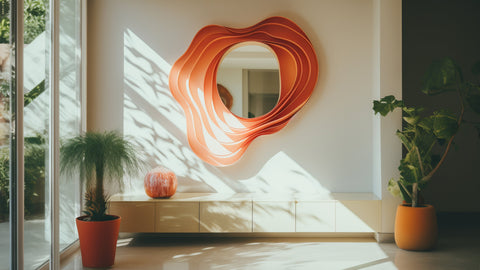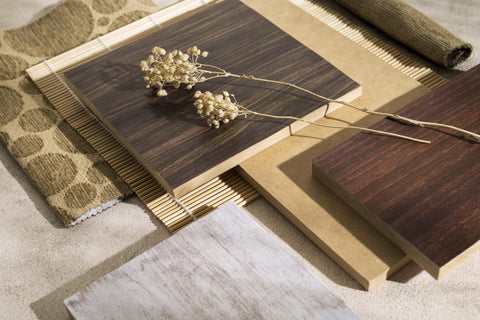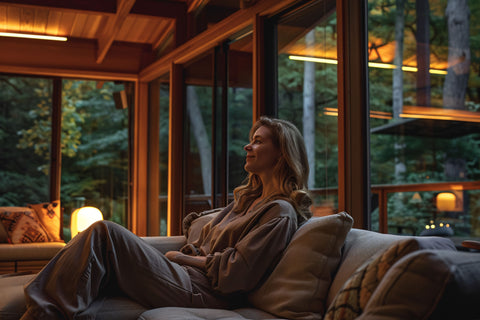Perfection is achieved, not when there is nothing more to add, but when there is nothing left to take away. — Antoine de Saint-Exupéry
In a world where visual clutter often replaces thoughtful selection, the most refined interiors aim to restore harmony through the deliberate use of a few, well-chosen elements. Among these, one stands out: the focal point in interior design. Far more than a decorative feature, it plays a vital role in organizing the space with intention and personality, transforming a room from a functional container into a sensorial experience.
Creating one or more focal points in a space is not just about the beauty of the chosen objects, but about their ability—whether material or light—to generate a cohesive visual narrative that naturally and effortlessly attracts and guides the eye.
Focal Point Interior Design Definition: A Quiet Force
Often perceived unconsciously, the focal point is that element—by virtue of size, placement, contrast, or composition—that immediately captures attention. But it is not merely a showpiece. It acts as a visual and conceptual anchor around which all other design decisions orbit. It could be a work of art, a stone-clad fireplace, a sculptural chair, or even a panoramic window dramatically framed—what matters is its ability to dominate the space with grace, never appearing forced or out of place.
Knowing what a focal point is in interior design also means understanding what it is not: it’s not an isolated or decorative object, but a catalyst of focus and visual order. It prevents dispersion, provides orientation, and often informs the layout of furniture, lighting, and even rugs.
Sculptural Furniture as a Focal Point in Interior Design

In design practice, one of the most impactful strategies for defining a focal point interior design is through sculptural furniture. These pieces blend everyday function with artistic expression. This approach is particularly striking in high-end Brazilian design, where organic shapes, natural materials, and artisanal craftsmanship come together to create furniture that appears carved rather than constructed.
To highlight such a piece effectively, it should be visible from multiple angles, ideally placed in an unobstructed area. For instance, a curvaceous sofa on a neutral rug allows it to “float” in the space, while carefully planned lighting can direct the eye and create a focal point in interior design with near-theatrical drama.
A common mistake is to overload a room with multiple competing focal points. If everything demands attention, nothing truly stands out. That’s why learning how to create a focal point in interior design involves visual discipline and balance—giving your chosen centerpiece the breathing room it needs to resonate.
Materials, Textures, and Colors as Visual Anchors

For a more understated but equally effective approach, a focal point can be established through compelling materials or textures. Picture a wall clad in vertical Cumaru wood slats that emphasize room height, or a terracotta-colored Venetian plaster surface that reflects light with velvety elegance.
In such cases, the focal point interior design isn’t a single object but an environmental presence—an immersive texture or surface that commands attention through its perceptual quality. Materials here become storytelling devices, narrating origin, craftsmanship, and sensory appeal. A reading nook, framed by custom wood paneling or bespoke shelving, can become a visual centerpiece through quiet cohesion. The key lies in isolating one coherent element—or a group—and building a silent yet powerful harmony around it.
Light as a Sculptor of Emotion and Focus

Lighting is essential in interior design, shaping depth and spatial rhythm. Using light to emphasize a focal point in interior design isn’t just functional—it’s theatrical. Spotlights, hidden LED strips, or sculptural wall sconces can underscore architectural volumes, niches, or statement pieces, creating an evolving dialogue between object and space throughout the day and seasons.
Natural light can also be harnessed creatively—with reflective surfaces, transparent materials, or landscape framing. A large window showcasing a tropical tree or vertical garden, when well-integrated, becomes a poetic, shifting focal point tied to the rhythm of the day.
The Power of Contrast: Material, Form, and Rhythm

When discussing how to create a focal point in interior design, one cannot overlook the power of contrast. Contrast acts as a visual spark—triggering interest and guiding the eye. It’s not limited to light and dark, but also includes material combinations like wood and metal, matte and gloss, organic and geometric, or soft versus strict forms.
A curvy designer chair in a sharply angular room becomes magnetic precisely due to this contrast. Similarly, a gold pendant lamp above a raw concrete table draws attention through material tension. In this way, contrast becomes more than decoration—it becomes a perceptual structure reinforcing the focal point as unmistakably central.
Scale and Proportion: The Balanced Focal Point

Even the most beautifully designed element can fall flat if its scale doesn’t harmonize with the room. A small piece in a vast room may disappear; an oversized one in a compact space can feel overbearing. Understanding the relationship between size, height, depth, and proportion is essential to achieving a focal point that truly commands presence.
When scale is well-calibrated, the focal point asserts itself effortlessly, establishing visual harmony. Picture an oversized chair in an otherwise empty corner: it can become a striking anchor, but only if surrounded by breathing space and a restrained color palette. In this sense, knowing how to create a focal point in interior design is akin to musical composition—where balance and rhythm define the experience. Proportion is not just measured in centimeters, but in the equilibrium it conveys to both eye and space.
When the Focal Point Shifts: Dynamic Spaces and Flexible Interiors
In a living home, balance is never static. Needs evolve, rhythms change—even the light varies throughout the day. That’s why a flexible approach to focal point interior design is crucial. A multifunctional room—like a living area that doubles as a home office—may benefit from dual focal points: a large painting above the sofa by day, an iconic desk lamp by night.
Color can also play a dynamic role. A light-reflective wall during the day can transform into a backdrop for projection, curated objects, or musical moments at night. Today’s interiors are celebrated not for rigidity but for elegant adaptability—while still maintaining a clear visual hierarchy.
Tropicalistic Inspirations to Create Focal Point

For those looking to decorate with distinctive focal points, Tropicalistic offers a curated selection of furnishings and objects celebrating Brazilian design through craftsmanship, materials, and visual composition. A standout example: the Relevos da Terra wall tapestries by Carolina Kroff—handmade with layered dyed cotton threads, they transform walls into dimensional, evocative surfaces.
To define a room’s focal point, these textile pieces can be paired with elements like the Centopeia bench or the Linha side table by Estudio Igor Lima, both marked by clean lines and natural materials evoking a tropical aesthetic. Studio Noir’s ceramic vases, with their organic forms and earthy tones, serve as poetic counterpoints completing the scene.
Enhancing the environment with woven rugs, natural fiber furnishings, and tropical indoor plants helps build a cohesive visual ecosystem. Every piece contributes to a focal point interior design that is not just beautiful—but rich with identity and meaning.
Conclusion
Designing a focal point in interior design means infusing a space with intention and depth. Whether bold or subtle, the focal point is the visual nucleus from which harmony radiates. Brazilian design, with its seamless blend of nature and craftsmanship, offers ideal tools for creating balanced, unique interiors. Like the title of a story, the focal point gives meaning and direction to everything else.




Comments (0)
There are no comments for this article. Be the first one to leave a message!